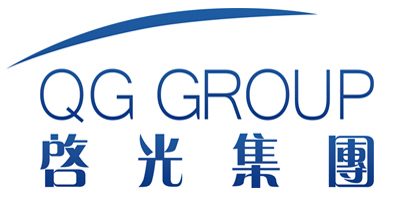Extraction of biosurfactants
Extraction of fermentation products (also known as downstream processing) accounts for approximately 60% of the total production cost and is a major barrier to commercialization of biosurfactant products. The optimal extraction method for biosurfactants varies depending on the fermentation operation and its physicochemical properties. Solvent extraction is the most commonly used extraction method, e.g., Kuyukina et al used methyl-tert-butyl ether to extract the biosurfactant produced by Rhodococcus erythropolis, and a high yield of 10 mg/L could be obtained.Ultrafiltration is a new method used for the extraction of biosurfactants.Lin et al extracted lipopeptide

biosurfactants produced by Bacillus cereus from fermentation broth by using ultrafiltration membranes with molecular weight cutoff of 30,000 Da. Mattei et al. designed a device for the continuous extraction of biosurfactants, and the product could be continuously extracted with a yield as high as 3 g/L by using a faceted flow filtration method . The product extraction methods that can be used in conjunction with continuous fermentation production include foam separation, ion exchange resin method, etc. Davis et al used foam separation method to continuously extract the salvatrol produced by Bacillus subtilis, and the yield reached 71.4%. The extraction process of rhamnolipid is centrifugation and filtration to remove the cells, and then through adsorption chromatography to concentrate the rhamnolipid on Amberlite XAD-2 resin, and then purified by ion-exchange chromatography, and finally the liquid evaporation and freeze-drying can be obtained as a finished product of 90% purity, with a yield of 60% .

Application of biosurfactant in environmental engineering Many chemically synthesized surfactants are difficult to degrade, toxic and accumulate in the ecosystem and other properties and damage the ecological environment, in contrast, biosurfactant is easy to biodegradation, non-toxic ecological environment and other characteristics and is more suitable for environmental engineering pollution control. For example, it can be used as flotation trapping agent in wastewater treatment process to remove toxic metal ions by adsorption with charged particles, and remediation of sites contaminated by organic matter and heavy metals.
4.1 Application in wastewater treatment process When treating wastewater by biological method, heavy metal ions often produce inhibitory or toxic effects on microbial flora in activated sludge, therefore, pretreatment is required when treating wastewater containing heavy metal ions by biological method. Currently, hydroxide precipitation is commonly used to remove heavy metal ions in wastewater, but its precipitation efficiency is limited by the solubility of hydroxide, the application of the effect is not very satisfactory; flotation method for wastewater pretreatment is often used for the flotation capture agent in the subsequent treatment process is difficult to degrade (such as chemical synthesis of surfactants sodium dodecyl sulfate), prone to secondary pollution and is limited, therefore, there is a need to develop easy biodegradation, Therefore, it is necessary to develop easily biodegradable and non-toxic substitutes for the environment, and biosurfactants happen to have this advantage. However, the application of biosurfactants in this area has been rarely studied at home and abroad, and has not been reported until recently.Zouboulis et al.[10] investigated the use of biosurfactant as a trapping agent for the removal of two kinds of toxic metal ions, Cr4+ and Zn2+, which are widely present in industrial wastewater. The results showed that both Savantin and Bacillus licheniformis could well separate αFeO(OH) or chelates formed by Cr4+ and FeCl3?6H2O from wastewater with adsorbed Cr4+ at pH 4, and greatly improved the removal of Cr4+ (50 mg/L), which was almost up to 100%; and the removal rate of Zn2+ in the chelates was as high as 96% for Savantin at pH 6; and the removal rate of Zn2+ in the chelates was as high as 96% for Savantin at pH 6. At pH 6, the removal rate of Zn2+(50mg/L) in chelate by Savontaine was as high as 96%, while under the same condition, the treatment effect of Bacillus licheniformis was not obvious, and the removal rate was about 50%.4.2 Application in bioremediation In the process of remediation of polluted environment by using microorganisms to catalyze the degradation of

organic pollutants, the biosurfactant can be directly used in the fermentation broth, and the cost of separating, extracting and purifying surfactants can be saved, therefore, the biosurfactant is not suitable for the treatment of the polluted environment, so it is not necessary to use the fermentation broth. Therefore, the application of biosurfactants in on-site bioremediation of organic pollution sites has great potential. Overseas research on bioremediation began in the early 1980s, and there have been a large number of successful engineering examples. For example, Harvey et al added alginate lipids produced by Pseudomonas aeruginosa into the seawater contaminated by the crude oil spill caused by ExxonValdez tanker in Prince William Sound, Alaska, which greatly improved the degradation rate of crude oil. This is by far the largest and most successful on-site bioremediation in practical application. In China, there is no report on the successful use of biosurfactants in the treatment of environmental pollutants.

